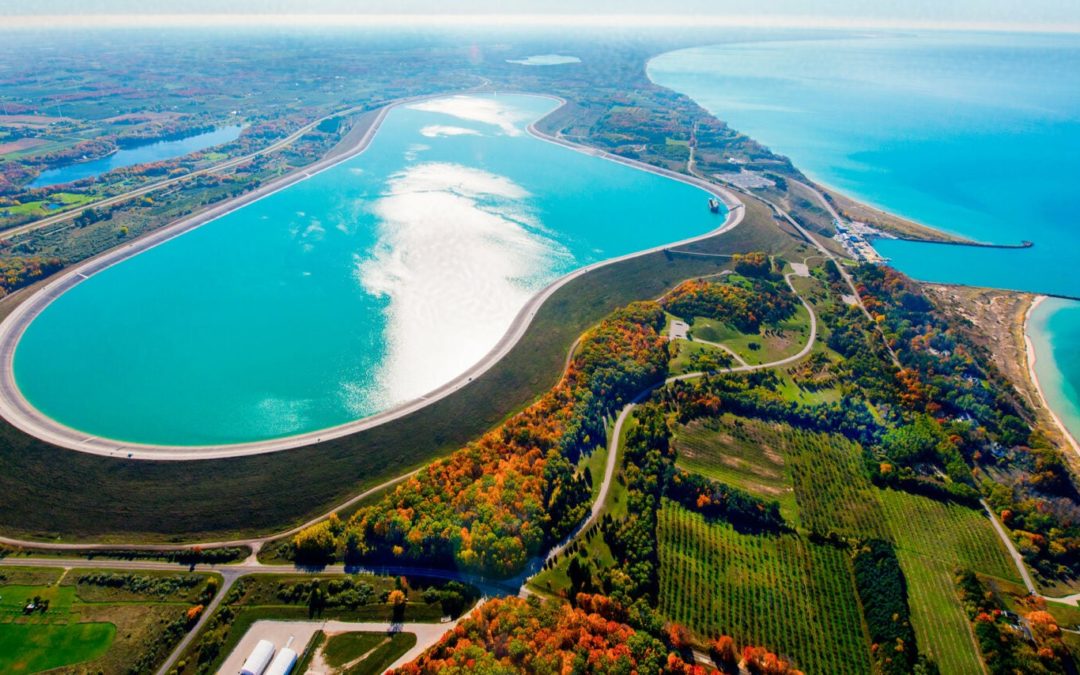Humans have devised all sorts of ways to create electricity, powering our lives for decades. The next logical step was, of course, to invent a storage system as well: and so batteries were created. When we picture them, we might think of the little AA or AAA batteries we put in our electronics and toys, or maybe those heavy car batteries. But have you heard of water batteries?
Also known as pumped hydroelectric storage, these water batteries are some of the biggest batteries in the world. They are very powerful, and extremely important, especially when it comes to solving the problem of a grid overload. Here are just a few ways that water batteries help.

Avoid being left high and dry
Pumped hydro storage works with two large pools of water, one higher than the other. When there’s extra energy, say from solar or wind making more electricity than a nearby town uses up, it’s used to push water from the bottom pool to the top one. This is already excellent because it reduces waste, but that’s just half the benefit. If not enough electricity is generated, like when the summer heat causes people to turn up the air conditioning and fans and ice machines, water will be released from the top pool. As it makes its way to the bottom pool, it spins a turbine that creates the needed electricity. Thanks to this ingenious method, grid overload is easily avoided.
Efficient to the max
Pumped storage hydropower is one of the biggest types of batteries in the world and is currently also the most efficient. We can store up to 553 gigawatt-hours of energy in water batteries across the US. Just how efficient is a water battery? It stores up to 70-80% of the energy that’s transferred to be held. Since no storage system can be 100% efficient – simply because it takes energy to store energy – this is an even more impressive amount than one might think at first glance.

Grow as you go
Starting in 2010 and continuing through 2019, “capacity increases” were made to six water battery storage facilities across the US. This grew their combined capacity by 1400 megawatts. The incredible part is that no new construction was needed to accomplish this. They simply needed some upgrades to their facilities to become more powerful. Because of this, pumped storage capacity grew by nearly as much as all other types of energy storage combined.
Keep a cool head
Among their many advantages, water batteries are able to provide more for us than just energy-related benefits. They can help prevent major damage from natural disasters by absorbing extra water, which can then be kept to power homes, or used to put out wildfires that may otherwise engulf nearby forests and communities. The couple of pools that make up a water battery can help, when needed, in providing clean water for crops and people so that we don’t get dehydrated during a heatwave. The reservoirs might even be a part of impoundment hydropower, meaning they will have opportunities for recreation like swimming, boating, and fishing.

Thanks to this simple method where water is pumped from a lake to a storage tank, our communities will have an advantage in the fight against climate change. Through pumped storage hydropower, we have been able to better adapt to nature rather than clearing it out of our way. Since these water batteries are so flexible, we can often generate power for the grid right away, delivering essential backup power to areas affected by electricity outages. It’s also more affordable than most other sources of energy, while being a perfect complement to other renewable energy sources like wind and solar. For all these reasons and more, we are grateful for the usage of hydroelectricity from water batteries.




